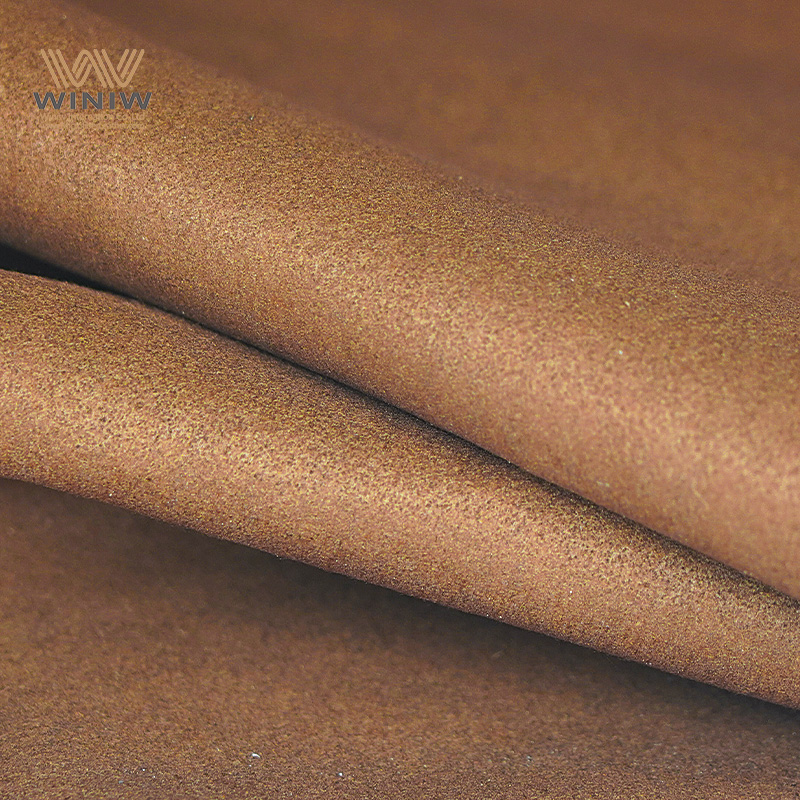
Gamuza sintética El material se refiere a un tejido sintético diseñado para imitar la gamuza auténtica. Los fabricantes suelen utilizar poliéster y poliuretano para producir este material. Seleccionan estos componentes por su durabilidad y su capacidad para imitar la textura suave y aterciopelada de la gamuza natural. El mercado de la gamuza sintética continúa expandiéndose:
Se proyecta que el tamaño del mercado de gamuza sintética crecerá de USD 1.200 millones en 2024 a USD 2.500 millones en 2033.
El tamaño del mercado de cuero de gamuza alcanzó los USD 19,19 mil millones en 2023 y podría llegar a USD 35,12 mil millones en 2031.
Los consumidores eligen gamuza sintética porque ofrece una apariencia y sensación similares sin piel animal. productos .
Gamuza sintética Es un tejido sintético que imita el aspecto y la sensación de la gamuza real, fabricado principalmente de poliéster y poliuretano.
El mercado de gamuza sintética está creciendo rápidamente y se proyecta que alcance los 2.500 millones de dólares en 2033, lo que la convierte en una opción popular entre los consumidores.
La gamuza sintética ofrece beneficios éticos, ya que no se somete a crueldad animal y no contiene productos de origen animal, lo que resulta atractivo para los compradores conscientes del medio ambiente.
Este material es versátil y se puede utilizar en diversas aplicaciones, incluidas ropa, muebles e interiores de automóviles.
La gamuza sintética es más fácil de mantener que la gamuza real, ya que resiste las manchas y requiere una limpieza menos frecuente.
Diferentes tipos de gamuza sintética, como microgamuza y gamuza sintética tejida, proporcionan texturas y beneficios únicos para usos específicos.
Elegir gamuza sintética elaborada con materiales reciclados o de origen vegetal puede ayudar a reducir el impacto ambiental.
El cuidado regular, como el cepillado y la limpieza de manchas, puede prolongar la vida útil de los productos de gamuza sintética y mantenerlos como nuevos.
Material de gamuza sintética es un tipo de gamuza sintética Diseñado para imitar la apariencia y el tacto del ante genuino. Los fabricantes crean este tejido utilizando tecnología avanzada y fibras químicas, lo que lo convierte en una alternativa popular para quienes buscan estilo, comodidad y practicidad.
La composición de la gamuza sintética la distingue de otras telas sintéticas. Los fabricantes utilizan una combinación específica de fibras y tratamientos para lograr las características distintivas del ante.
El poliéster constituye la base de la mayoría de las gamuzas sintéticas. Esta fibra sintética proporciona resistencia, flexibilidad y resistencia al desgaste. Además, ayuda a que la tela conserve su forma y color con el tiempo. Su uso en gamuzas sintéticas garantiza que la tela se mantenga ligera y fácil de cuidar. Además, el poliéster contribuye a la resistencia al agua y la durabilidad, características que muchos consumidores valoran.
El poliuretano suele presentarse como un revestimiento o una mezcla de fibras en la gamuza sintética. Este componente aporta suavidad y mejora la capacidad del tejido para imitar la textura aterciopelada de la gamuza auténtica. El poliuretano también aumenta la resistencia del tejido a las manchas y la humedad. Algunos fabricantes incluyen elastano en la mezcla, lo que mejora la drapeabilidad y la comodidad. La combinación de poliéster y poliuretano confiere al ante sintético su tacto y rendimiento característicos.
Nota: La gamuza sintética está compuesta por fibras químicas procesadas mediante técnicas especiales de teñido y acabado. Estos métodos permiten que la tela se asemeje mucho a la piel de animales, ofreciendo además ventajas como suavidad y resistencia al agua.
La textura juega un papel crucial en el atractivo de la gamuza sintética. La superficie de la tela se siente suave y tersa gracias al uso de filamentos de microfibra. Estas diminutas fibras crean un acabado esponjoso y elegante que se asemeja mucho a la pelusa de la gamuza auténtica. La gamuza sintética suele tener una textura más uniforme que la gamuza auténtica, que puede sentirse ligeramente áspera y presentar variaciones naturales.
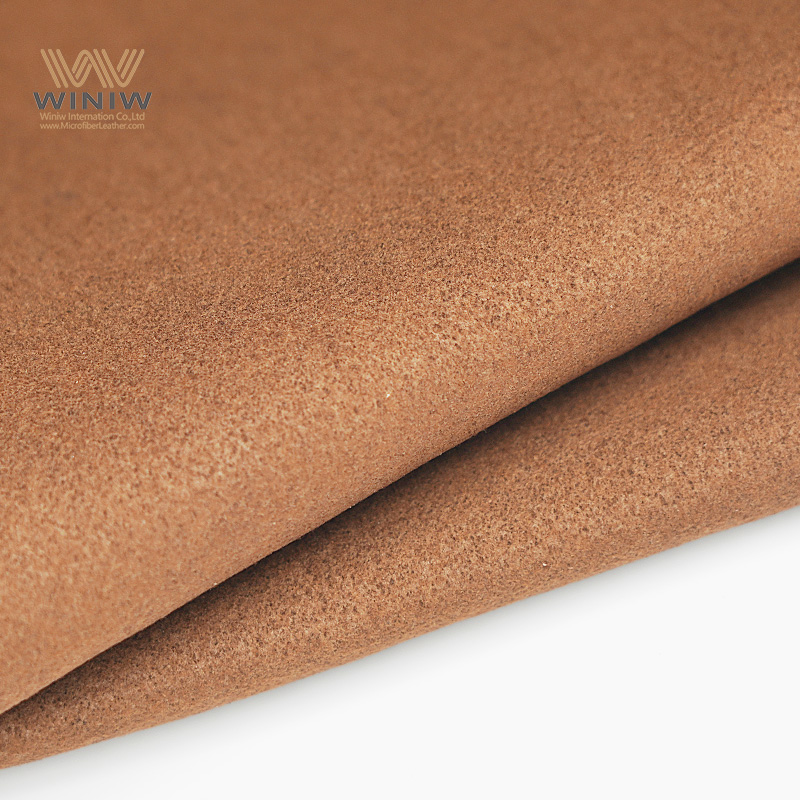
|
Característica |
Ante auténtico |
Gamuza sintética |
|---|---|---|
|
Textura |
Grano suave, ligeramente irregular |
Más suave, más uniforme |
|
Sentir |
Textura cálida y orgánica con variaciones. |
Brillo sintético, menos calidez. |
|
Variaciones de color |
Variaciones sutiles de fibras naturales. |
Color más uniforme |
El ante es conocido por su tacto muy suave, gracias a su suave acabado de lanilla. El ante sintético reproduce esta sensación, pero suele ser más consistente y menos variado que el ante natural.
Muchos consumidores eligen la gamuza sintética por sus ventajas prácticas y éticas. Esta tela resulta atractiva para quienes buscan la apariencia de la gamuza sin usar productos de origen animal. Diversos factores impulsan su popularidad:
Consideraciones ambientales La producción de gamuza sintética puede utilizar materiales reciclados, lo que reduce la contaminación plástica y el impacto ambiental en comparación con la gamuza auténtica. La huella hídrica de la producción de cuero puede superar los 15.000 litros por vaca, y las emisiones de metano de la ganadería contribuyen significativamente a los gases de efecto invernadero.
Diversos campos de aplicación La gamuza sintética es versátil. Los fabricantes la utilizan en ropa, calzado, equipaje, muebles y más. Esta versatilidad la hace atractiva tanto para la moda como para... hogar decoración.
Opciones de personalización La gamuza sintética se puede teñir y terminar en muchos colores y patrones, lo que permite una mayor personalización.
avances tecnológicos Las mejoras en los métodos de producción han hecho que la gamuza sintética sea más suave, más duradera y más atractiva que nunca.
La gamuza sintética combina estilo, comodidad y sostenibilidad. Su composición y textura la convierten en una opción ideal para quienes buscan una alternativa a la gamuza sintética.
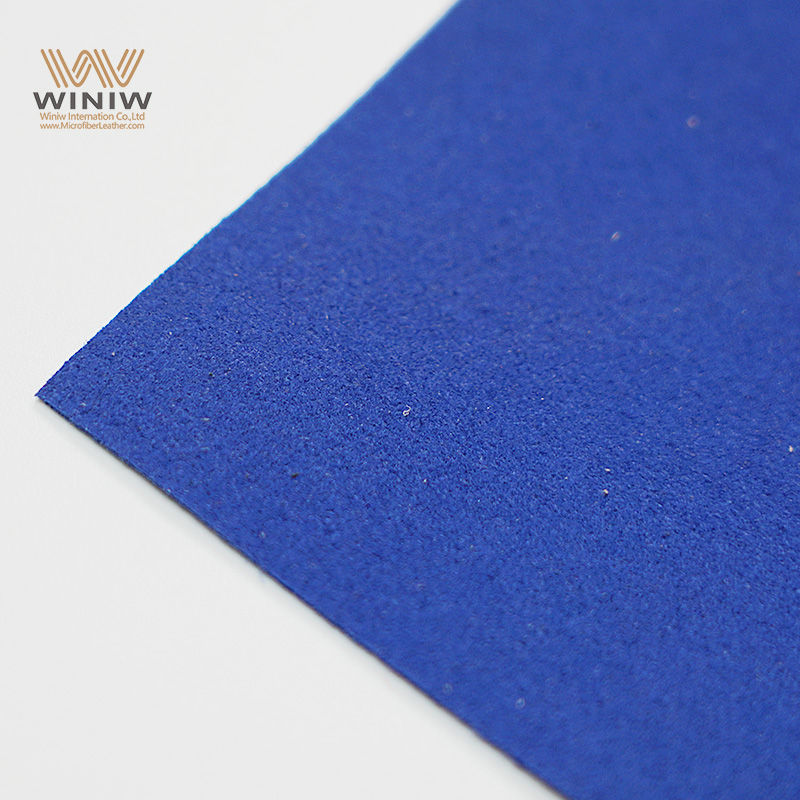
Los fabricantes utilizan procesos avanzados para crear gamuza sintética Se asemeja mucho al ante genuino. La producción de ante sintético implica la selección de materias primas específicas y el seguimiento de una serie de pasos técnicos. Esta sección explica los materiales utilizados, el proceso de fabricación y las consideraciones ambientales.
La gamuza sintética se basa en una combinación de materiales sintéticos y, en ocasiones, vegetales. La selección de estos componentes determina la textura final, la durabilidad y la sostenibilidad del producto.
La microfibra constituye la base de muchas telas de gamuza sintética. Los fabricantes la eligen por sus diversas ventajas:
|
Característica |
Contribución al rendimiento |
|---|---|
|
Durabilidad |
Resistente al desgaste, ideal para áreas de alto uso como muebles en hogares con mascotas. |
|
Fácil mantenimiento |
Altamente resistente a las manchas, fácil de limpiar con métodos simples, requiere poco mantenimiento. |
|
Asequibilidad |
Más económico que la gamuza real, proporcionando una sensación de lujo a un coste menor. |
|
Versatilidad en el diseño |
Disponible en varios colores y patrones, adecuado para diversas aplicaciones. |
|
Opción ecológica |
Fabricado con materiales sintéticos, libre de crueldad animal y con una huella ambiental menor. |
La microfibra realza la gamuza sintética, volviéndola suave, resistente y fácil de mantener. Sus finas fibras crean una superficie suave que imita la pelusa de la gamuza auténtica.
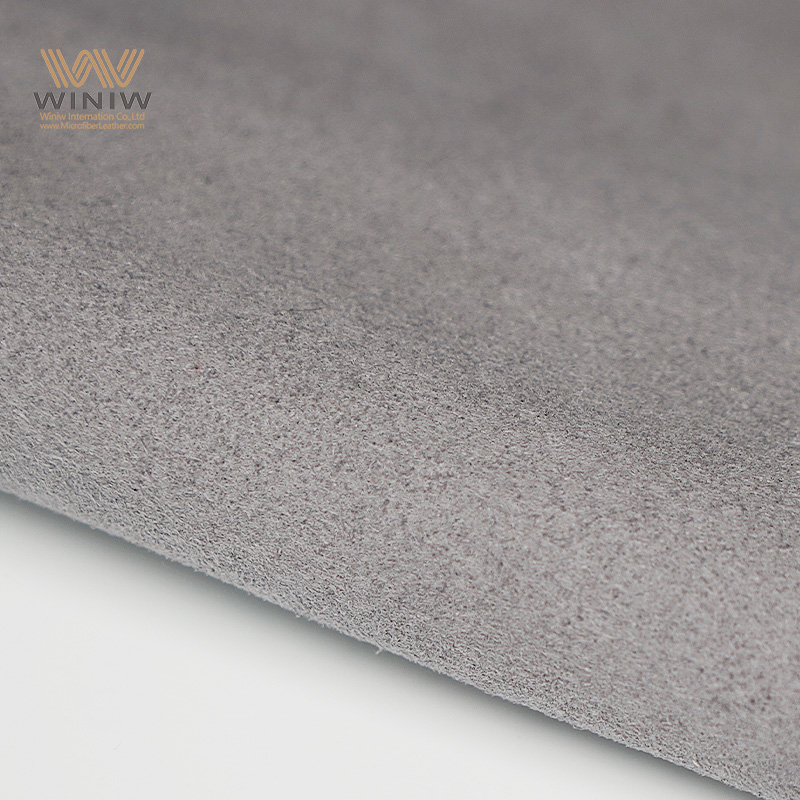
La tela no tejida proporciona estructura y estabilidad al material de gamuza sintética. Los fabricantes unen las fibras mediante calor, productos químicos o procesos mecánicos. Este método produce una tela resistente al deshilachado y que conserva su forma. Las telas no tejidas también permiten una producción eficiente y una calidad constante.
|
Materia prima |
Fuente |
|---|---|
|
Poliéster |
Producido a partir de etilenglicol y ácido tereftálico mediante polimerización. |
|
Poliuretano (PU) |
Se utiliza a menudo en tratamientos de acabado para lograr durabilidad y resistencia al agua. |
Algunos fabricantes incorporan materiales de origen vegetal, como hojas de piña, manzanas, hongos, uvas y cactus. Otros utilizan materiales reciclados, como residuos textiles y botellas de plástico, para reducir el impacto ambiental.
La producción de gamuza sintética sigue una serie de pasos precisos. Cada etapa contribuye al aspecto y rendimiento final del tejido.
Los fabricantes comienzan tejiendo o tejiendo filamentos de poliéster y microfibra para formar una tela base. Este paso crea la estructura inicial y determina la densidad y flexibilidad del material. También se pueden utilizar técnicas de no tejido para unir fibras sin necesidad de tejerlas tradicionalmente.
Tras formar la base, la tela se cepilla y se termina. El cepillado levanta las fibras, creando la textura suave y aterciopelada que define la gamuza sintética. Los tratamientos de acabado suelen incluir recubrimientos de poliuretano para mayor durabilidad y resistencia al agua.
El proceso industrial incluye teñido, preencogimiento, lijado y moldeado. Los trabajadores inspeccionan y empaquetan el producto terminado tras peinar la superficie para lograr la lanilla deseada.
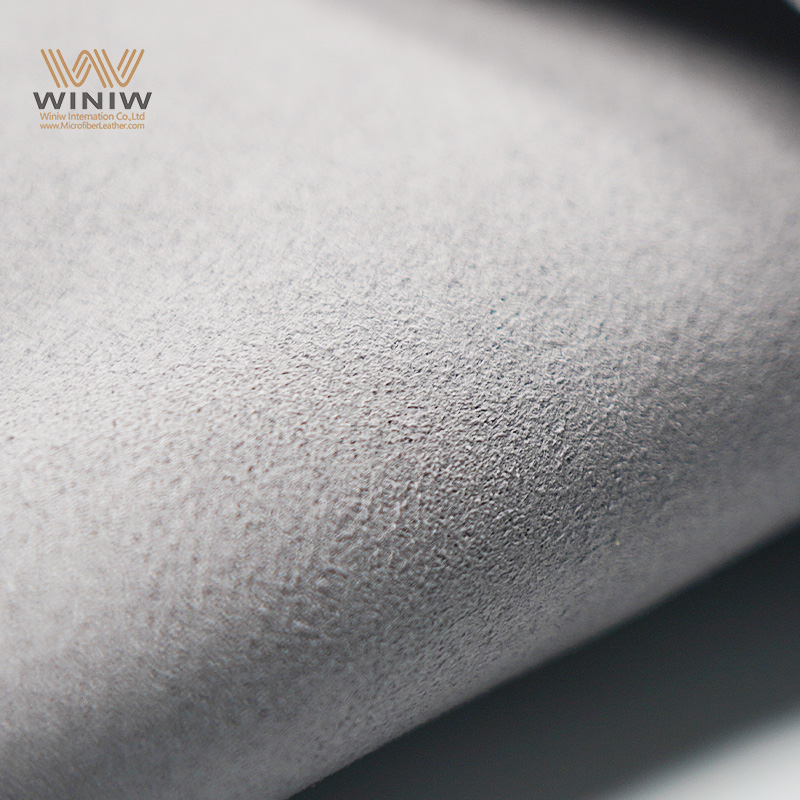
Pasos de fabricación típicos:
La tela gris entra a la fábrica de teñido.
Emparejar cilindros, dar vuelta y desenrollar y coser extremos.
Contenido de álcali, preencogimiento, apertura de fibra.
Deshidratación, ancho de apertura.
Preajuste.
Lijado.
Productos semiacabados para teñir después del lijado.
Tome los productos semiacabados después del lijado para hacer muestras de color.
Una vez lista la fórmula, ábrala y drene el tanque de teñido.
Teñido fuera del tanque.
Deshidración.
Apertura.
Conformado del producto terminado.
Peinar el cabello.
El producto terminado está listo para su inspección.
Embalaje del producto terminado.
La fabricación de gamuza sintética plantea diversas preocupaciones ambientales. El uso de poliéster y poliuretano, ambos derivados de productos químicos derivados del petróleo, contribuye a la contaminación plástica y a las emisiones de gases de efecto invernadero. El proceso de producción consume una cantidad considerable de energía y libera sustancias químicas nocivas.
La gamuza sintética no es biodegradable. Puede tardar cientos de años en descomponerse, liberando sustancias químicas y microfibras que dañan la vida silvestre y los ecosistemas.
Los fabricantes abordan estos problemas utilizando fibras recicladas y materiales de origen biológico. Optimizan la producción para reducir el consumo de agua y energía, empleando equipos de teñido y acabado que ahorran agua.
Las prácticas de gestión de residuos incluyen el reciclaje de restos de producción y la promoción de una economía circular. Algunas empresas transforman la ropa usada en nuevos recursos.
Consejo: Elegir material de gamuza sintética elaborado con fibras recicladas o de origen vegetal puede ayudar a reducir el impacto ambiental.
La gamuza sintética ofrece una alternativa libre de crueldad animal a la gamuza de origen animal, pero los consumidores deben considerar la huella ambiental de la producción de gamuza sintética.
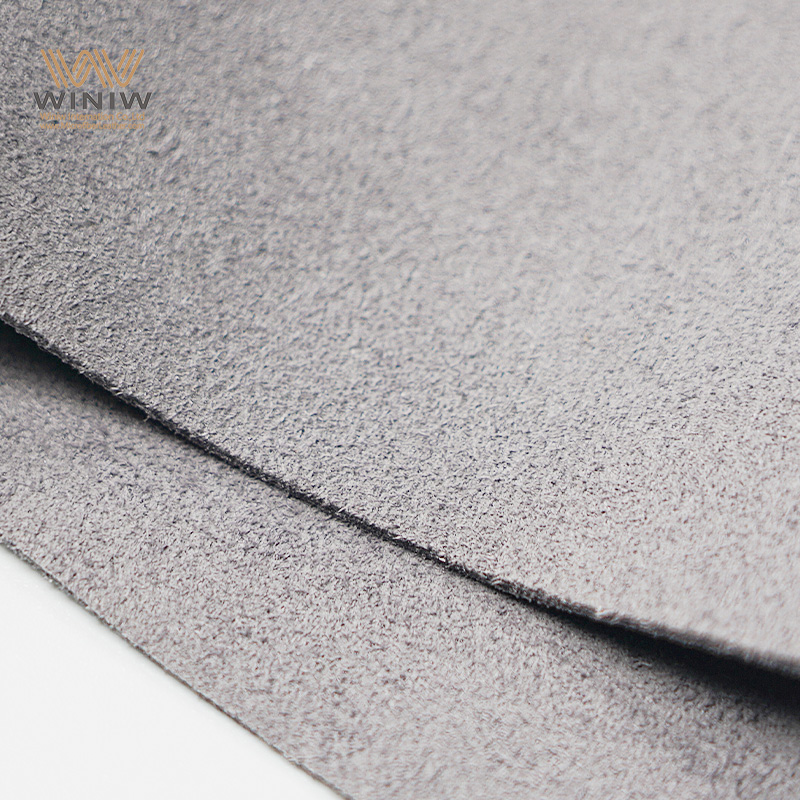
La microgamuza destaca como uno de los tipos más populares de gamuza sintética. Los fabricantes la producen tejiendo fibras sintéticas extremadamente finas, como poliéster o poliamida. Este proceso crea un tejido suave y liso al tacto. La microgamuza ofrece una textura uniforme, ideal para quienes prefieren la consistencia en sus materiales.
La estructura de la fibra de la microgamuza la distingue de otras variedades de gamuza sintética. La siguiente tabla destaca las principales diferencias:
|
Característica |
Microgamuza |
Otros ante sintéticos |
|---|---|---|
|
Producción de fibra |
Tejido a partir de fibras sintéticas como poliéster o poliamida. |
Varía, a menudo incluye diferentes mezclas sintéticas. |
|
Textura |
Suave, liso y uniforme. |
Puede variar en textura y suavidad. |
|
Transpirabilidad |
Menos transpirable debido a una superficie menos porosa. |
Generalmente más transpirable |
|
Resistencia al agua |
Hidrófugo |
Varía, puede que no sea resistente al agua. |
La superficie menos porosa de la microgamuza la hace menos transpirable, pero resiste mejor el agua y las manchas que muchos otros tipos de gamuza sintética. Esta característica la convierte en una opción popular para muebles y accesorios que requieren una limpieza y un mantenimiento sencillos. Su acabado liso también permite colores y estampados vibrantes, que los diseñadores utilizan para crear productos con estilo.
La gamuza sintética tejida utiliza un método de producción diferente. Los fabricantes utilizan la tecnología de tejido de punto por urdimbre para crear este tejido. El resultado es un material con excelente elasticidad y comodidad. La gamuza sintética tejida se adapta bien al cuerpo, lo que la hace ideal para prendas como chaquetas, faldas y pantalones.
La gamuza sintética tejida ofrece una buena resistencia al desgaste y no se deshilacha fácilmente. La tela conserva su color con el tiempo, lo que la hace atractiva para un uso prolongado. Su tacto suave y su caída la convierten en una prenda ideal para prendas que requieren flexibilidad.
La gamuza sintética tejida ofrece elasticidad y comodidad.
Este tipo se adapta a prendas que necesitan un buen ajuste.
La tela resiste el desgaste y mantiene el color.
La gamuza sintética tejida ofrece un equilibrio entre durabilidad y comodidad. Los diseñadores suelen elegir este material para prendas de moda que buscan estilo y practicidad.
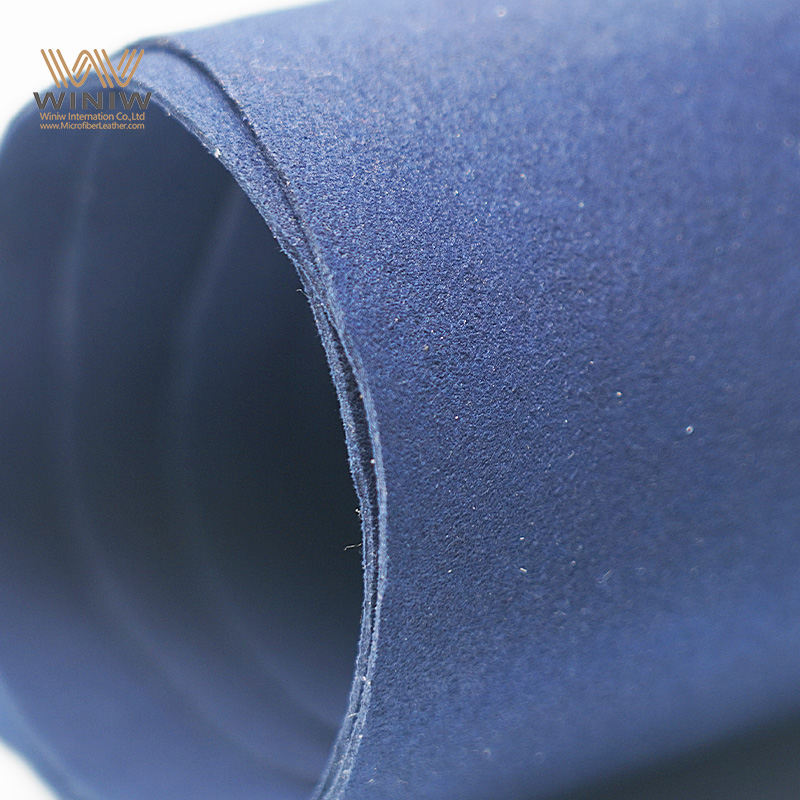
La gamuza sintética tejida presenta una estructura robusta y estructurada. Los fabricantes utilizan técnicas de tejido para entrelazar fibras sintéticas, lo que da como resultado una tela que mantiene bien su forma. La gamuza sintética tejida se encuentra comúnmente en tapicería y cortinas debido a su durabilidad.
La siguiente tabla compara la gamuza sintética tejida y de punto en términos de durabilidad y aplicación:
|
Tipo |
Durabilidad |
Solicitud |
|---|---|---|
|
Gamuza sintética de punto |
Buena resistencia al desgaste, no propenso a la formación de bolitas. |
Adecuado para prendas que requieren flexibilidad y comodidad. |
|
Gamuza sintética tejida |
Robustez y estructura |
Se utiliza comúnmente para tapicería y cortinas. |
La gamuza sintética tejida resiste un uso intensivo, lo que la hace ideal para muebles de hogares y oficinas. Su estructura garantiza que conserve su aspecto con el paso del tiempo. Los diseñadores la eligen para proyectos que exigen resistencia y durabilidad.
Estos tres tipos de gamuza sintética La microgamuza, el tejido de punto y el tejido de punto demuestran la versatilidad de los materiales de gamuza sintética. Cada tipo ofrece ventajas únicas, lo que permite a fabricantes y diseñadores seleccionar la mejor opción para sus necesidades específicas. Los tipos de gamuza sintética siguen evolucionando a medida que la tecnología avanza, ofreciendo más opciones a los consumidores.
Los fabricantes siguen innovando con tipos especiales de gamuza sintética. Estas variedades únicas ofrecen características mejoradas, nuevas texturas y una mayor variedad de usos. La gamuza sintética especial atrae a diseñadores que buscan trascender los límites de la moda, el mobiliario y los accesorios.
Gamuza sintética ecológica
Algunas empresas producen gamuza sintética con fibras recicladas o materiales vegetales. Hojas de piña, hongos y manzanas son la fuente de estos tejidos sostenibles. La gamuza sintética ecológica reduce el impacto ambiental y atrae a consumidores que valoran las decisiones responsables. La textura se mantiene suave y su apariencia es muy similar a la de la gamuza sintética tradicional.
Gamuza sintética en relieve
La gamuza sintética repujada presenta patrones o diseños en relieve impresos sobre la superficie. Esta técnica crea interés visual y añade dimensión. Los diseñadores utilizan la gamuza sintética repujada para bolsos, zapatos y cojines decorativos. Este proceso permite crear motivos intrincados, como formas geométricas o estampados florales.
Consejo: La gamuza sintética con relieve es ideal para prendas llamativas. Los diseños en relieve captan la luz y resaltan las cualidades únicas de la tela.
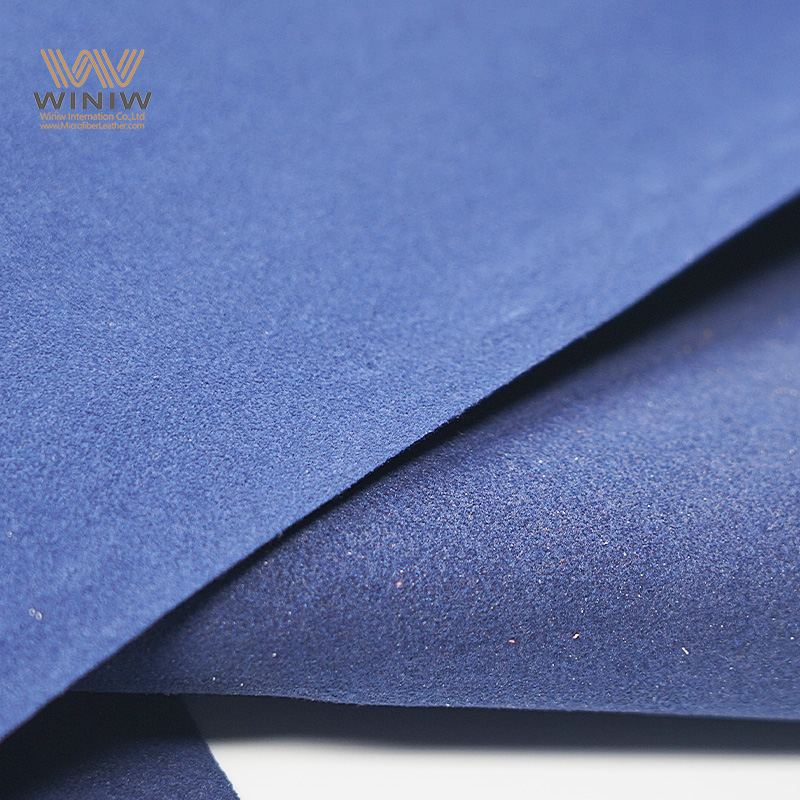
Gamuza sintética elástica
La gamuza sintética elástica contiene spandex o elastano mezclado con poliéster. Esta combinación le proporciona flexibilidad y comodidad. La gamuza sintética elástica es ideal para prendas que requieren movimiento, como leggings, chaquetas ajustadas y trajes de baile. El material se adapta al cuerpo y recupera su forma original después del uso.
Gamuza sintética de alto rendimiento
La gamuza sintética de alto rendimiento ofrece propiedades avanzadas para entornos exigentes. Los fabricantes tratan la tela para que sea resistente al agua, las manchas y la decoloración. Los interiores de automóviles, los muebles de exterior y el equipamiento deportivo suelen incluir gamuza sintética de alto rendimiento. Su durabilidad y fácil mantenimiento la convierten en una opción práctica.
|
Tipo de especialidad |
Característica clave |
Usos comunes |
|---|---|---|
|
Ecológico |
Fabricado con fibras recicladas o de origen vegetal. |
Moda, tapicería |
|
En relieve |
Patrones/diseños en relieve |
Accesorios, decoración |
|
Estirar |
Mayor flexibilidad |
Ropa, disfraces |
|
Actuación |
Mayor durabilidad |
Automoción, equipamiento para actividades al aire libre |
Gamuza sintética personalizada
Algunos fabricantes ofrecen opciones personalizadas de gamuza sintética. Los clientes seleccionan colores, texturas y acabados según sus necesidades. La gamuza sintética personalizada se encuentra en artículos de lujo, productos de marca y colecciones de edición limitada.
Los tipos especiales de gamuza sintética amplían las posibilidades para diseñadores y consumidores. Cada variedad ofrece ventajas únicas, ya sea en sostenibilidad, estilo, comodidad o durabilidad. El desarrollo continuo de la gamuza sintética garantiza el surgimiento de nuevas aplicaciones y características en el futuro.
La diferencia entre gamuza y gamuza sintética Comienza con su material principal. El ante auténtico proviene de serraje, que los fabricantes obtienen de la piel animal. El ante sintético utiliza tela sintética, generalmente elaborada con fibras sintéticas como el poliéster y el poliuretano. Estas fibras se someten a tratamientos especiales para imitar la textura suave y cepillada del ante auténtico.
La siguiente tabla destaca las principales distinciones:
|
Característica |
Ante auténtico |
Gamuza sintética |
|---|---|---|
|
Material |
Cuero partido de piel de animal |
Tejido sintético elaborado a partir de fibras sintéticas |
|
Textura |
Acabado suave, fibroso y cepillado. |
Textura suave y cepillada que imita la gamuza real. |
|
Transpirabilidad |
Transpirabilidad natural |
Carece de transpirabilidad natural. |
|
Durabilidad |
Desarrolla una pátina rica, duradera con cuidado. |
Puede pelarse, agrietarse o desarrollar una apariencia brillante. |
|
Cuidado |
Requiere cepillado regular y aerosoles protectores. |
Más fácil de limpiar, más resistente al agua. |
|
Impacto ambiental |
De origen animal, menos ecológico |
Opción vegana y ecológica |
La gamuza sintética ofrece una alternativa vegana y ecológica, mientras que la gamuza auténtica proporciona un tacto natural y transpirabilidad. La elección del material influye no solo en la textura, sino también en el impacto ambiental y los requisitos de mantenimiento.
El precio juega un papel importante al comparar estos dos materiales. La gamuza sintética suele ser más cara que la gamuza auténtica en el mercado global. El proceso de fabricación de la gamuza sintética implica tecnología avanzada y fibras sintéticas, lo que puede incrementar los costos de producción.
|
Material |
Precio medio |
|---|---|
|
Gamuza sintética |
$37.54 |
|
Ante auténtico |
$30.16 |
Los consumidores pueden encontrar productos de gamuza sintética a un precio más elevado, especialmente cuando los fabricantes utilizan fibras especiales u opciones ecológicas. La gamuza auténtica, aunque en promedio es más económica, puede generar costos adicionales de cuidado y mantenimiento con el tiempo.
El cuidado de la gamuza sintética es diferente al de la gamuza auténtica. La gamuza sintética es más resistente a las manchas, lo que facilita su mantenimiento. Los fabricantes recomiendan revisar las etiquetas de cuidado antes de lavar. Si no encuentra la etiqueta, lavar a mano con un detergente suave es una buena opción. Pruebe el producto de limpieza en una zona poco visible antes de aplicarlo por completo.
Después del lavado, presione el exceso de agua con un paño que no suelte pelusa y vuelva a dar forma a la prenda mientras esté húmeda.
Nunca coloque la gamuza sintética en la secadora; séquela siempre al aire libre.
Para las manchas a base de aceite, aplique maicena o talco y déjelo reposar durante la noche para que absorba los aceites antes de cepillar los residuos.
Para las manchas a base de agua, utilice una mezcla de jabón suave y agua, seguido de secar suavemente con un paño limpio.
El mantenimiento regular incluye cepillar la tela semanalmente con un cepillo de cerdas suaves.
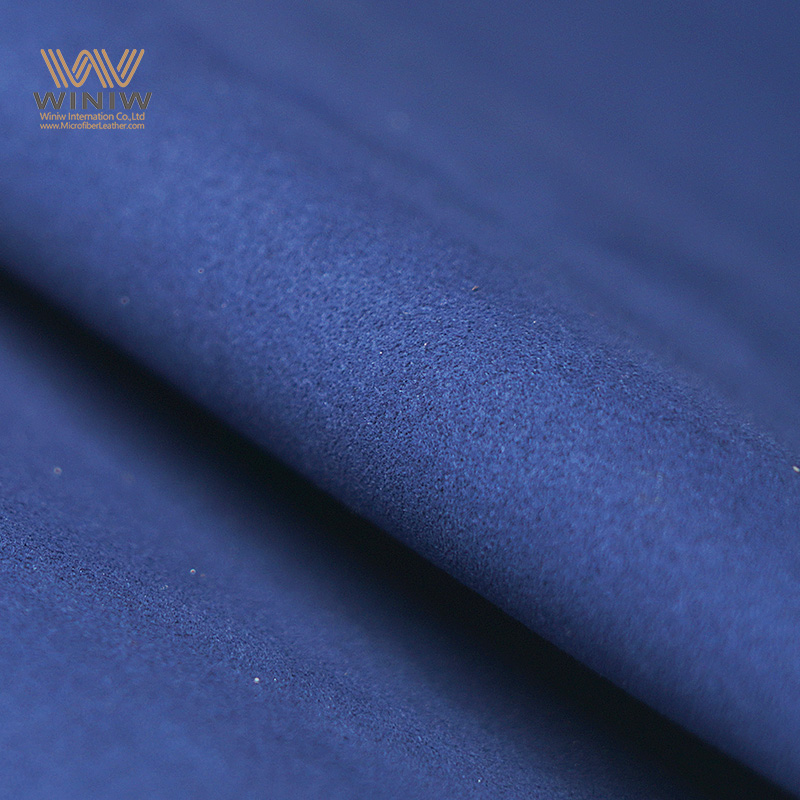
Para manchas difíciles, limpie las manchas con alcohol transparente o detergente diluido. Si se puede lavar a máquina, use un ciclo suave con prendas similares. Para lavar a mano, remoje en agua tibia con detergente y luego enjuague bien.
El ante auténtico requiere más atención. Es importante cepillarlo con regularidad y usar aerosoles protectores para mantener su aspecto. El ante sintético ofrece una limpieza más fácil y mayor resistencia al agua, lo que lo convierte en una opción práctica para estilos de vida ajetreados.
La durabilidad es fundamental al comparar la gamuza sintética con la gamuza auténtica. Los fabricantes diseñan la gamuza sintética para que resista el desgaste diario. Este material sintético muestra una resistencia impresionante en entornos de alto tráfico. La gamuza sintética resiste mejor la abrasión que la gamuza auténtica. Se suele elegir esta tela para muebles, interiores de coches y accesorios que requieren un rendimiento duradero.
El ante auténtico, hecho de piel animal, es suave y lujoso. Sin embargo, es más delicado. Es importante tratarlo con cuidado para evitar arañazos, manchas y decoloración. Las fibras naturales del ante auténtico pueden deteriorarse con el tiempo, especialmente por la exposición a la humedad o al manejo brusco.
La gamuza sintética ofrece varias ventajas en términos de durabilidad:
La gamuza sintética resiste el uso frecuente y mantiene su apariencia por más tiempo que la gamuza real.
El material resiste derrames y no se mancha fácilmente, lo que lo hace adecuado para hogares con niños o mascotas.
La gamuza sintética no requiere aerosoles ni tratamientos especiales para proteger su superficie.
Limpiar la gamuza sintética es sencillo y la tela se seca rápidamente después del lavado.
El ante auténtico, por otro lado, requiere un mantenimiento regular. Es necesario cepillar la lanilla y aplicar productos protectores para evitar daños. Incluso con un manejo cuidadoso, el ante auténtico puede desarrollar manchas brillantes o perder su textura con el tiempo.
La siguiente tabla destaca las diferencias clave en durabilidad:
|
Característica |
Gamuza sintética |
Ante auténtico |
|---|---|---|
|
Resistencia a la abrasión |
Alto |
Bajo |
|
Resistencia a las manchas |
Excelente |
Pobre |
|
Mantenimiento |
Fácil |
Requiere cuidados especiales |
|
Longevidad |
Mantiene el aspecto con un cuidado mínimo. |
Propenso al desgaste y a la decoloración. |
La gamuza sintética ofrece una solución práctica para quienes buscan una apariencia similar a la gamuza sin preocuparse por dañarla. Las fibras sintéticas de este material le permiten conservar el color y la textura, incluso después de años de uso. Quienes valoran la durabilidad suelen elegir la gamuza sintética para tapicería, ropa y accesorios.
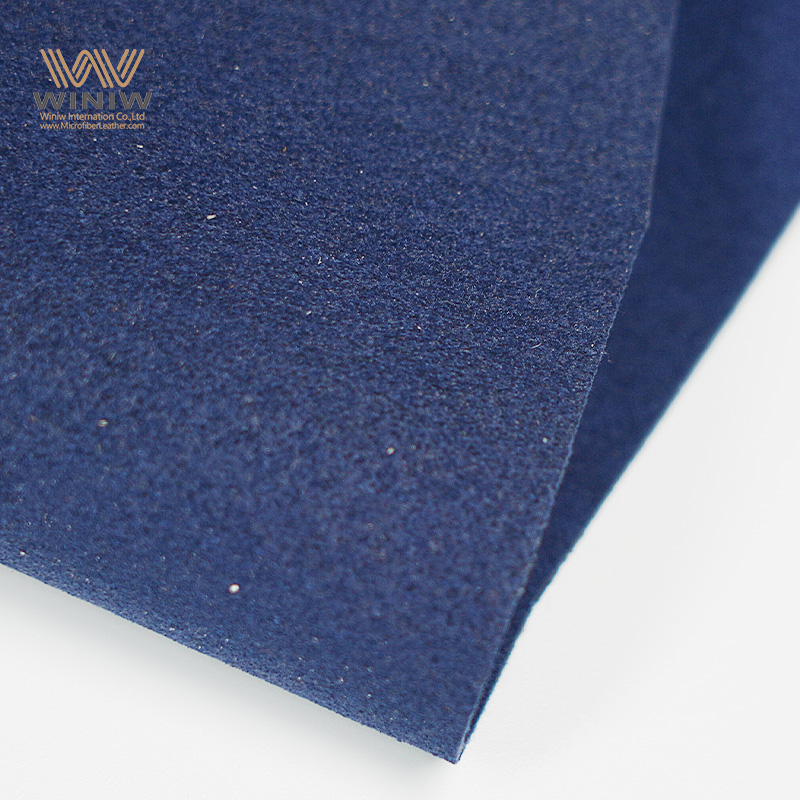
Hoy en día, las consideraciones éticas influyen en muchas decisiones de compra. La gamuza sintética atrae a los consumidores que buscan opciones libres de crueldad animal. Este material no utiliza productos animales ni daña a los animales durante su producción. Los fabricantes crean gamuza sintética con fibras sintéticas o materiales vegetales, en consonancia con los valores veganos y respetuosos con los animales.
El ante auténtico proviene de pieles de animales. El proceso de obtención del cuero genera preocupación por el bienestar animal y el impacto ambiental. Algunas personas evitan el ante auténtico porque no apoyan a las industrias que utilizan productos animales.
Los puntos éticos clave incluyen:
La gamuza sintética ofrece una alternativa respetuosa con los animales y apoya estilos de vida libres de crueldad animal.
La producción de gamuza sintética no requiere pieles de animales, lo que reduce las preocupaciones éticas.
La gamuza auténtica proviene de fuentes animales, lo que puede entrar en conflicto con las creencias personales sobre el trato a los animales.
Las personas que priorizan la ética suelen elegir la gamuza sintética para moda, muebles y accesorios. Este material les permite disfrutar del aspecto y la textura de la gamuza, a la vez que promueven decisiones responsables. A medida que aumenta la concienciación, más fabricantes invierten en opciones de gamuza sintética sostenibles y éticas.
La gamuza sintética ofrece una gama de ventajas y desventajas. Comprenderlas puede ayudar a los consumidores a tomar decisiones informadas al elegir materiales para ropa, muebles o accesorios.
La gamuza sintética destaca por su precio asequible. En comparación con la gamuza real, ofrece una opción económica para quienes buscan una apariencia similar a la gamuza sin un precio elevado. Muchos productos de gamuza sintética de alta gama ofrecen calidad a un precio más bajo. La siguiente tabla muestra la diferencia de precio:
|
Material |
Costo |
|---|---|
|
Gamuza sintética |
Asequible |
|
Ante auténtico |
Más caro |
Consejo: La gamuza sintética permite a los consumidores disfrutar de productos elegantes sin gastar de más.
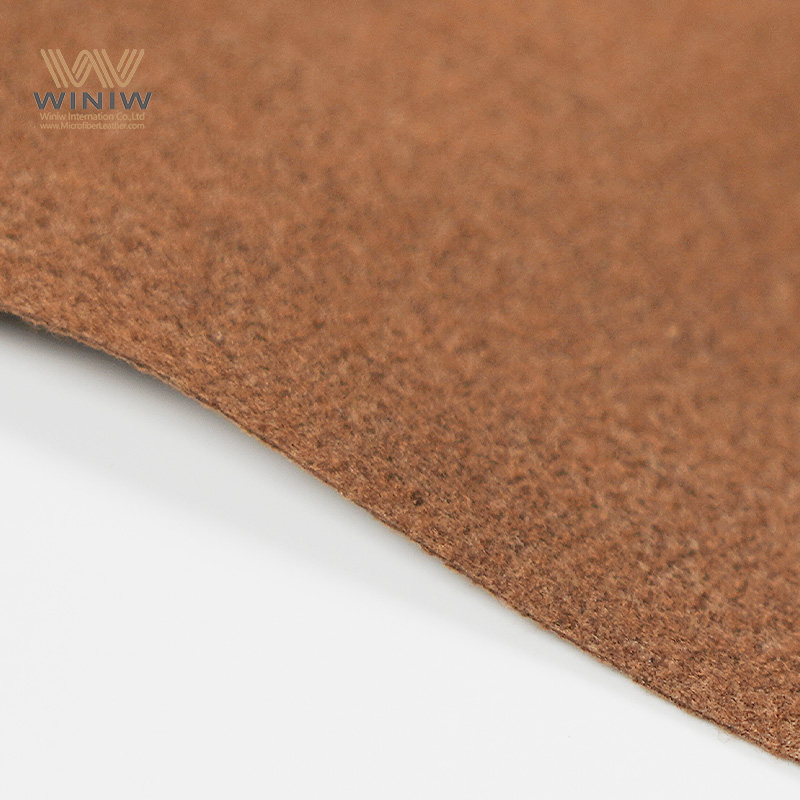
La gamuza sintética es apreciada por su fácil cuidado. El material es resistente a las manchas y no requiere productos de limpieza especiales. El cepillado regular y la limpieza ocasional de manchas mantienen su aspecto impecable. A diferencia de la gamuza auténtica, la gamuza sintética no necesita aerosoles protectores ni mantenimiento frecuente.
La gamuza sintética es ideal para quienes buscan productos libres de crueldad animal. Los fabricantes utilizan fibras sintéticas o vegetales, por lo que no dañan a ningún animal durante su producción. Esta característica promueve estilos de vida veganos y compras éticas.
Los diseñadores valoran la gamuza sintética por su adaptabilidad. El material se puede teñir en muchos colores y moldear en diversos patrones. Esta versatilidad lo hace ideal para ropa, muebles y accesorios. La siguiente tabla resume las ventajas comunes encontradas en las reseñas de los consumidores:
|
Ventaja |
Descripción |
|---|---|
|
Versatilidad de diseño |
La gamuza sintética se puede teñir en varios colores, lo que la hace adaptable a diferentes estilos de decoración. |
|
Durabilidad |
Conocida por su resistencia, la gamuza sintética resiste el desgaste y mantiene los muebles atractivos a lo largo del tiempo. |
|
Resistencia a la estática |
Permanece libre de estática, mejorando la experiencia del usuario. |
|
Calor |
Proporciona un ambiente acogedor, añadiendo comodidad y lujo a los espacios habitables. |
La gamuza sintética no ofrece la misma transpirabilidad que la gamuza auténtica. Las fibras sintéticas, de tejido apretado, retienen el calor y la humedad, lo que puede causar incomodidad en condiciones cálidas o húmedas. El calzado y la ropa de gamuza sintética pueden resultar menos cómodos en climas cálidos.
Los zapatos de gamuza sintética suelen ser cómodos, pero carecen de la transpirabilidad de la gamuza auténtica.
Las fibras sintéticas pueden atrapar el calor y la humedad, lo que provoca incomodidad en climas cálidos.
Algunos productos de gamuza sintética pueden desarrollar bolitas con el tiempo. El uso frecuente o la fricción pueden provocar la formación de bolitas en la superficie. Este problema afecta la apariencia y el tacto del material.
La producción de gamuza sintética se basa en productos químicos derivados del petróleo. El material no es biodegradable y puede liberar microfibras de plástico al medio ambiente. Estas microfibras contaminan las cadenas alimentarias y ponen en peligro la vida silvestre y la salud humana.
La gamuza sintética libera microfibras de plástico que contaminan las cadenas alimentarias.
El impacto ambiental puede ser grave, especialmente si no se recicla adecuadamente.
Aunque la gamuza sintética se ve y se siente similar a la gamuza auténtica, puede que no ofrezca la misma sensación de lujo. Algunas personas notan diferencias en la textura y la calidez. La gamuza sintética puede desarrollar patrones de desgaste poco naturales, como descascarillado o un aspecto brillante, lo que reduce su atractivo premium.
Nota: Si bien la gamuza sintética ofrece muchos beneficios, los consumidores deben sopesarlos frente a sus limitaciones antes de realizar una compra.
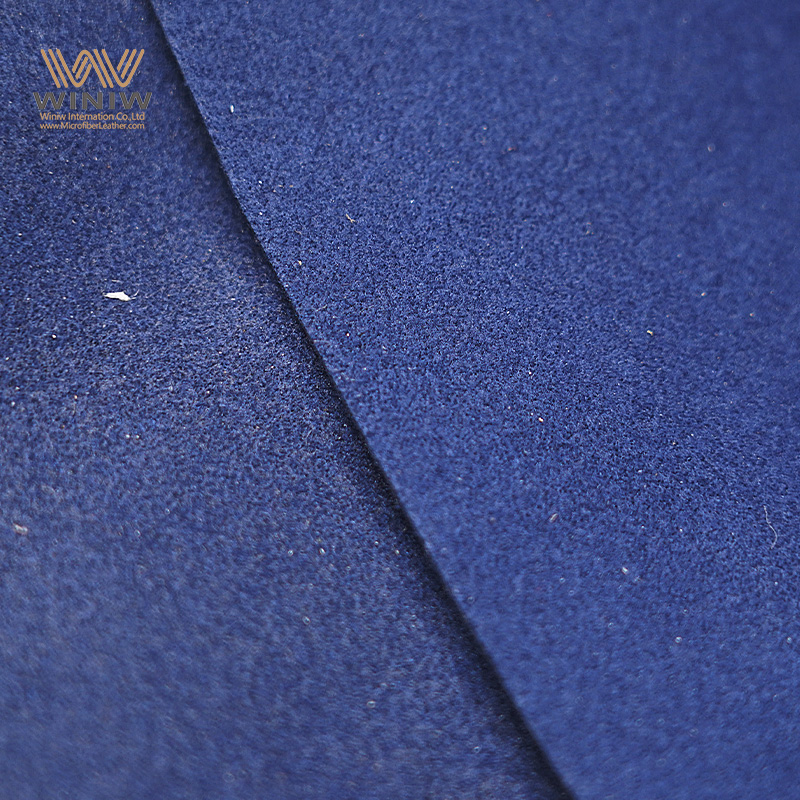
Gamuza sintética Se ha convertido en un elemento básico en la industria de la moda. Los diseñadores suelen elegir este material por su textura suave y versatilidad. Las chaquetas y pantalones de ante sintético ofrecen calidez y protección, especialmente en climas fríos. Mucha gente prefiere la ropa de ante sintético porque resiste mejor el agua y las manchas que el ante natural. Además, la tela retiene bien el color, lo que permite una amplia gama de estilos y tonos.
Los accesorios de moda se benefician de la durabilidad y comodidad de la gamuza sintética. Zapatos, bolsos, cinturones y carteras suelen tener forros o exteriores de gamuza sintética. Estos artículos son suaves al tacto y resisten el uso frecuente. Su ligereza la hace ideal para combinar con prendas tanto informales como formales.
La gamuza sintética permite a los diseñadores crear piezas elegantes y respetuosas con los animales que atraen a un público amplio.
Los usos comunes de la gamuza sintética en la moda incluyen:
Chaquetas y abrigos para abrigarse y tener estilo.
Pantalones y faldas para un look suave y elegante.
Zapatos y botas con forros duraderos y cómodos.
Bolsos, cinturones y carteras que resisten el desgaste
Los fabricantes de muebles utilizan gamuza sintética para crear piezas cómodas y atractivas para hogares y negocios. Su suavidad y durabilidad la convierten en una opción popular para tapizar. Sofás, sillones, bancos y sillas suelen tener fundas de gamuza sintética. Este material resiste el uso diario y las manchas, lo que lo hace ideal para familias y dueños de mascotas.
La gamuza sintética también se utiliza en colchas, otomanas, reposapiés y cabeceros tapizados. Los asientos de restaurantes suelen usar gamuza sintética por su fácil mantenimiento y su tacto acogedor. El color y la textura uniformes de la tela ayudan a que los muebles mantengan una apariencia fresca con el paso del tiempo.
|
Artículo de mobiliario |
Aplicación de gamuza sintética |
|---|---|
|
Sofá/Sillón |
Tapicería |
|
Banco/Silla |
Fundas de asiento y respaldo |
|
Funda de cama |
Decorativo y funcional |
|
Otomana/Reposapiés |
Superficie suave y duradera |
|
Cabecera |
Acento tapizado |
|
Asientos del restaurante |
Cómodo, fácil de limpiar. |
La gamuza sintética se utiliza en una amplia gama de accesorios. Los diseñadores utilizan este material para confeccionar sombreros, guantes y bufandas suaves al tacto. La gamuza sintética también se utiliza en correas de reloj, fundas de teléfono y estuches para joyas. Estos accesorios combinan estilo y practicidad, ofreciendo un aspecto lujoso sin el alto coste de la gamuza auténtica.
Mucha gente elige accesorios de gamuza sintética por su fácil cuidado y resistencia a la decoloración. La flexibilidad de la tela permite formas creativas y diseños detallados. La popularidad de la gamuza sintética sigue creciendo a medida que más consumidores buscan opciones sostenibles y respetuosas con los animales.
Los fabricantes de automóviles confían en la gamuza sintética para diversas aplicaciones interiores. Este material combina estilo, comodidad y practicidad. Los diseñadores de automóviles la eligen para asientos, fundas de volante, paneles de puertas y tapizados del techo. Su suave textura crea una sensación de lujo en el interior de los vehículos. Además, la gamuza sintética es resistente a las manchas y al desgaste, lo que la hace ideal para superficies de alto contacto.
Conductores y pasajeros notan la diferencia cuando la gamuza sintética cubre los asientos. La tela se siente suave y cómoda durante viajes largos. La gamuza sintética no retiene tanto el calor como otros materiales sintéticos. Muchas marcas de autos de lujo usan gamuza sintética para realzar la apariencia de sus interiores. El material retiene bien el color, por lo que conserva un aspecto fresco con el paso del tiempo.
Los interiores de los automóviles se someten a un uso constante. La gamuza sintética resiste el desgaste diario. La tela resiste la decoloración por la luz solar y no se deshilacha fácilmente. Limpiar la gamuza sintética en los coches es sencillo. Los propietarios pueden limpiar los derrames con un paño húmedo o usar un cepillo suave para el polvo. El material se seca rápidamente después de la limpieza, lo que ayuda a prevenir el moho y los malos olores.
Consejo: Cepillar regularmente la gamuza sintética mantiene su aspecto como nuevo en el interior del automóvil. Use un cepillo de cerdas suaves para eliminar la suciedad y mantener la pelusa.
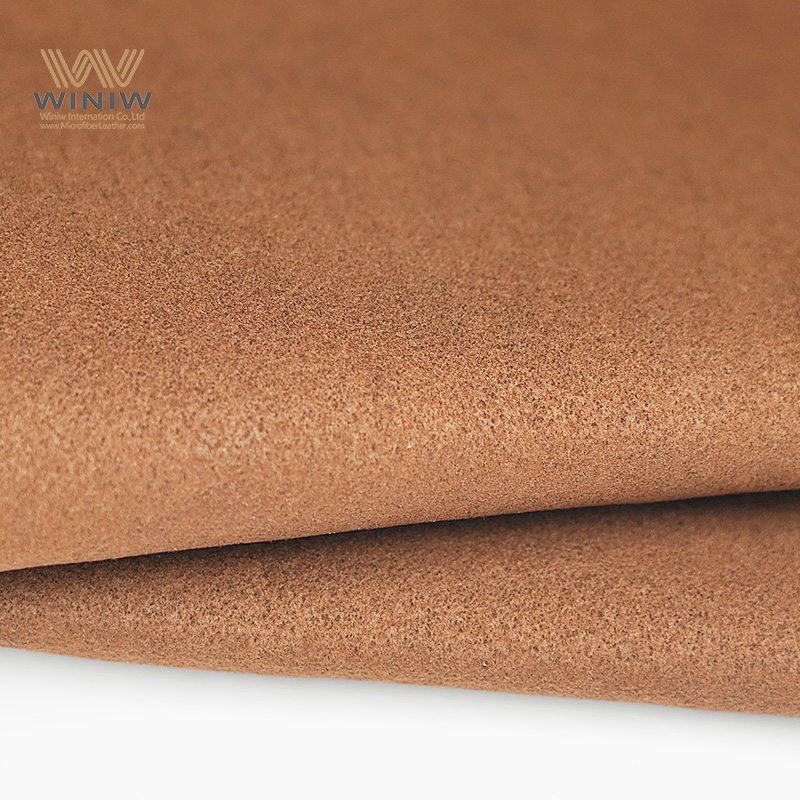
La gamuza sintética ofrece varias ventajas para aplicaciones automotrices:
La construcción liviana reduce el peso total del vehículo.
La resistencia al agua protege contra derrames y humedad.
El mantenimiento sencillo ahorra tiempo a los propietarios de automóviles.
La producción respetuosa con los animales apoya decisiones éticas.
La siguiente tabla destaca los usos comunes de la gamuza sintética en los vehículos:
|
Solicitud |
Beneficio |
|---|---|
|
Asientos |
Comodidad, durabilidad |
|
Volante |
Agarre, estilo |
|
Paneles de puerta |
Tacto suave, fácil limpieza. |
|
Cabezas de cartel |
Reducción de ruido, elegancia. |
|
Cubiertas de palanca de cambios |
Resistencia al desgaste, apariencia |
Los diseñadores de automóviles aprecian la versatilidad de la gamuza sintética. Este material se adapta a diferentes formas y superficies. Se puede teñir en muchos colores, lo que permite crear diseños de interiores personalizados. Algunos fabricantes combinan la gamuza sintética con otras telas para crear texturas únicas.
Los propietarios de automóviles deben tener en cuenta algunos consejos de cuidado. Evite los productos químicos agresivos al limpiar la gamuza sintética. Use productos y cepillos suaves. Proteja la tela de objetos afilados que puedan dañar las fibras. Con el cuidado adecuado, la gamuza sintética conserva su aspecto y rendimiento durante años.
La gamuza sintética sigue ganando popularidad en la industria automotriz. Su combinación de comodidad, durabilidad y estilo la convierte en una excelente opción para los vehículos modernos. Fabricantes y consumidores valoran las ventajas prácticas que aporta la gamuza sintética al interior de los automóviles.
Una limpieza adecuada ayuda a que la gamuza sintética conserve su textura suave y su atractivo aspecto. Muchas personas la eligen por su fácil mantenimiento y durabilidad. Seguir los pasos correctos garantiza que la tela se mantenga fresca y dure más.
Pasos de limpieza recomendados para gamuza sintética:
Examina la gamuza sintética para detectar manchas o suciedad visibles. Reúne materiales como alcohol isopropílico, un cepillo de cerdas suaves y jabón suave.
Consulta las instrucciones de cuidado de la gamuza sintética antes de empezar. Algunas prendas se pueden lavar a máquina, mientras que otras requieren limpieza a mano.
Para lavar a máquina la gamuza sintética, seleccione un ciclo suave y use agua fría. Coloque la prenda en una bolsa de malla para lavandería para proteger las fibras.
Para la limpieza a mano, limpie las manchas con un cepillo suave y una solución de agua y jabón suave. Pruebe siempre la solución de limpieza primero en una zona poco visible.
Elimina las manchas de aceite aplicando maicena. Déjala actuar toda la noche y luego retira el polvo con un cepillo.
Limpie las manchas a base de agua con una mezcla de agua y jabón suave. Seque suavemente con un paño limpio.
Seque la gamuza sintética al aire libre, lejos de la luz solar directa y fuentes de calor. Déle forma mientras esté húmeda.
Consejo: cepillar regularmente con un cepillo de cerdas suaves mantiene la gamuza sintética como nueva y evita que se enrede.
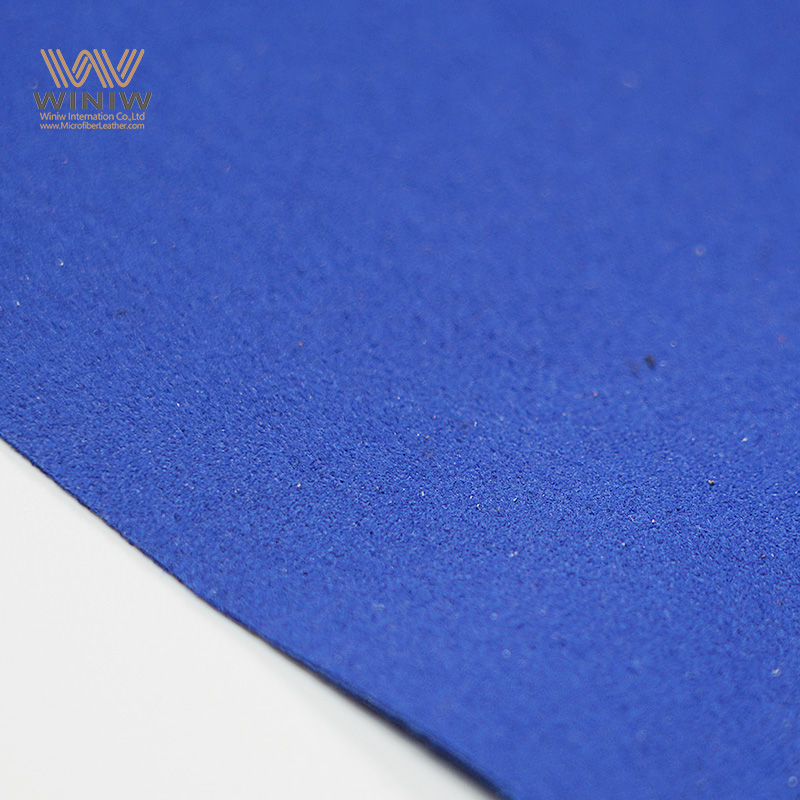
Consejos de limpieza adicionales:
Limpie los derrames inmediatamente para evitar manchas permanentes.
Evite utilizar limpiadores a vapor, que pueden dañar las fibras de gamuza sintética.
Mantenga la textura cepillando la tela semanalmente.
La siguiente tabla resume los métodos de limpieza para gamuza sintética:
|
Método de limpieza |
Descripción |
Mejor para |
|---|---|---|
|
Lavado a máquina |
Ciclo suave, agua fría, bolsa de malla. |
Artículos lavables a máquina |
|
Limpieza de manos |
Limpiar las manchas con jabón suave y cepillo suave. |
Artículos delicados |
|
Eliminación de manchas |
Maicena para el aceite, jabón y agua para los demás. |
Manchas específicas |
|
Secado al aire |
Plano, alejado del calor y la luz solar. |
Todos los productos de gamuza sintética |
La gamuza sintética responde bien a una limpieza cuidadosa. Seguir estos pasos ayuda a que sus prendas conserven su color y suavidad. El mantenimiento regular prolonga la vida útil de los productos de gamuza sintética y los mantiene en óptimas condiciones.

Escanear a wechat:
